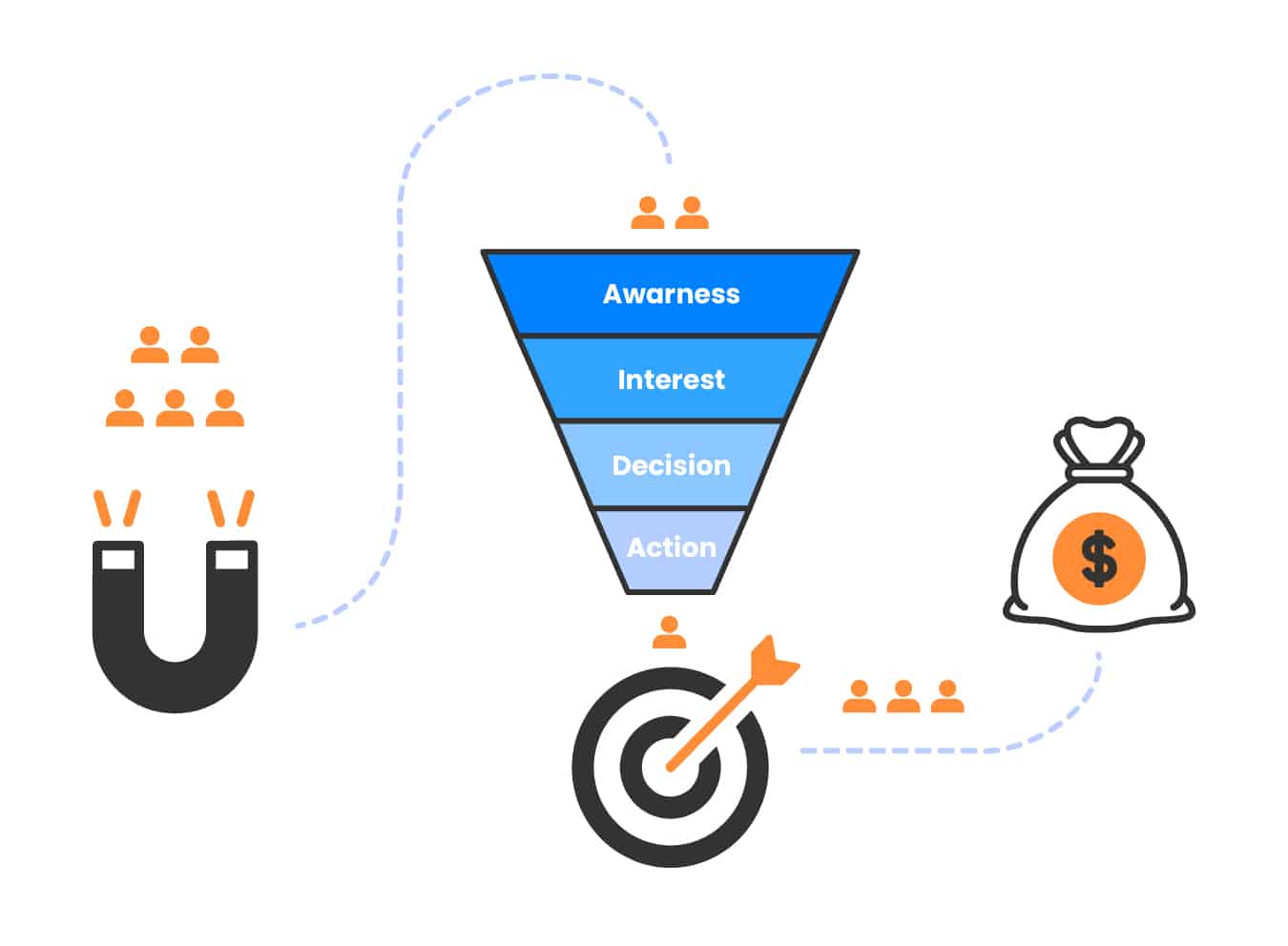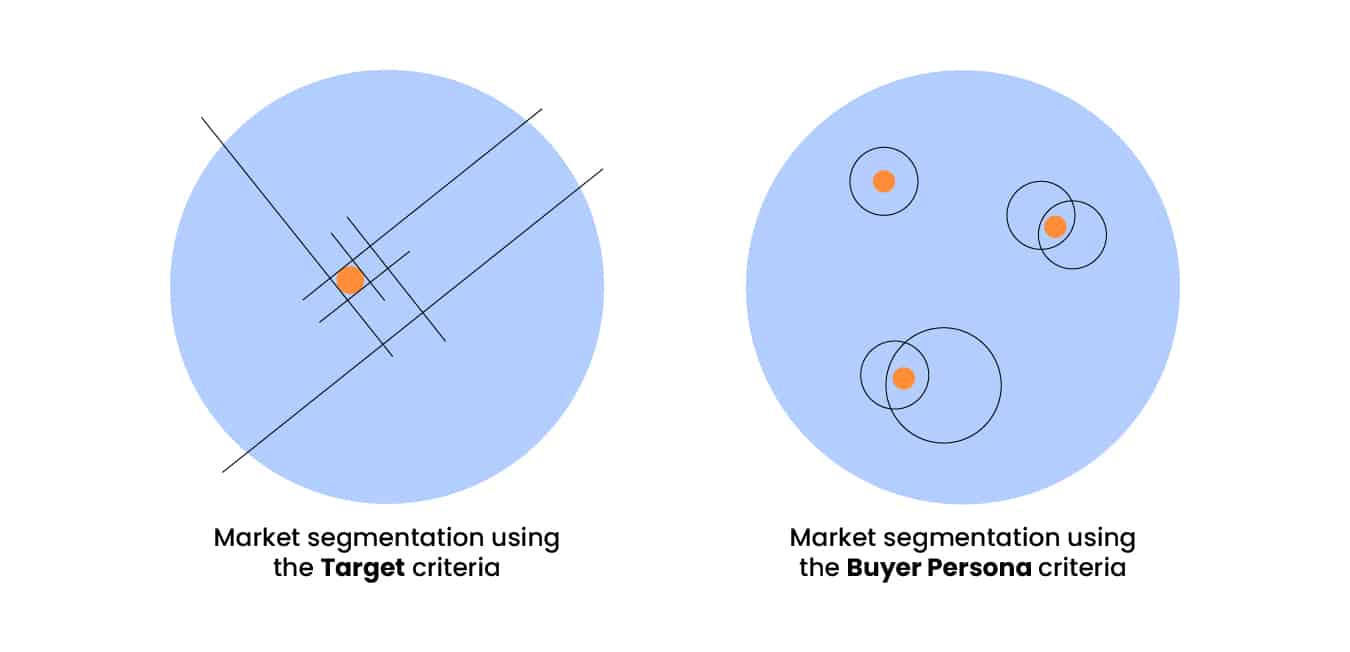Are you having trouble attracting more leads? Don’t worry, you’re not alone.
Most marketers and sales agents find it difficult to attract high-quality leads on a consistent basis. However, you can avoid a few things if you want to increase your chances of success.
In this blog post, we’ll talk about five common mistakes that may sabotage your lead-generation efforts.
Read on to find out what they are and how to improve them!
#1 Not understanding the online marketing sales funnel
If you’re in the world of online marketing, you’ve probably heard of the famous sales funnel, haven’t you? However, it is not uncommon that, in a market so changing and full of information, you are not entirely clear about what it is and more precisely how to adapt this strategy to your business.
The sales funnel refers to the stages through which the customer passes from the moment he learns about the company until he makes his purchase. Applying it to the sales process is important because it allows you to create more precise and effective marketing and sales strategies. You will take into account the needs of the leads according to the stage of the funnel in which they are.
The most commonly used funnel model is based on the AIDA model. It contemplates the four basic stages of a purchase-sale:
- Awareness: The lead knows your brand and what you offer.
- Interest: The prospect is interested in your product or service because he realizes that it can satisfy his need.
- Desire: The lead shows desire for what you offer.
- Action: The lead becomes a customer by deciding to buy from you.

Although some people think that this sales funnel is based on an outdated model, the truth is that it is the best because it is adaptable to any type of business.
You can always adjust it depending on how you approach your sales process. For example, if your business focuses much of its efforts on after-sales service, you can extend the funnel to a later phase of customer support and satisfaction.
Also, if you sell or offer more than one product or service, ideally you should create a sales funnel for each.
#2 Not defining your buyer persona
The buyer persona is nothing more than a profile of your consumer or ideal client. Not having it correctly defined can cause you to generate ineffective marketing campaigns and lose money.
If you define your ideal customer well, you will be able to design advertising strategies with content that will really move prospects or customers forward in the sales funnel.
Many businesses don’t define their buyer persona well because they confuse the concept with the target audience, but they are two different things. Let’s see:
- The target audience groups an indefinite number of people with no entity of their own.
- Within the same target audience, we can find different buyer personas.
- The buyer persona defines needs and not only aspects such as age, gender, purchasing power, etc.

Just as you can have different sales funnels for different products or services, you can have more than one ideal customer.
For example, let’s think of a business that sells degreasers. This degreaser may be for household cleaning. In that case, one ideal customer you could profile is a housewife who might be interested in the product for cleaning kitchens or bathrooms.
However, you could also produce a degreaser for people who require some kind of grease remover for car tires. In that case, the ideal customer would be totally different because the need changes.
In either case, you need to correctly profile your ideal customer. That’s why we share with you here a guide to the questions you need to ask to develop it better:
Role:
- Role in the company or in life?
- What is their job title?
- What is a typical day like for them?
- What skills do they require?
- What tools do they use?
Company:
- What company do they work for?
- What is the size of the company?
- How many employees does the company have?
Professional objectives:
- What responsibilities do they have in their position?
- How do they measure success?
- What are their biggest challenges?
Personal details
Gender (if relevant), age, marital status, education level, and place of residence.
Shopping Preferences
- How do they prefer to interact with merchants (by email, phone, or in person)?
- Do they research online before making a purchase? How do they do it?
- Keywords they enter into Internet search engines.
- Specific behavior within the company’s website.
How to get answers to these questions?
The most direct and simple option is to ask your customers for an interview, either individually or in groups.
Also, if you use any of these tools for your campaigns, you can take advantage of their database.
- Google Analytics: in the “audience” area you can learn many details about the audience that visits your website, their behavior, demographic data, and the type of devices they use.
- Facebook Insights: in the “people” tab you have basic information about your audiences such as location, age, and gender.
- Twitter Analytics: just like Facebook, but in the “followers” tab, you can collect data about your followers’ interests: topics of interest, TV content they consume, and phone companies they use.
Note: it is advisable to talk to dissatisfied customers as well because it allows you to define your ideal customer even better by understanding the reason for their dissatisfaction. You can then take steps to improve your product or service.
#3 Not following up with your leads
Many companies don’t care about prospects from whom they didn’t get an immediate or positive response.
This is a big mistake because many leads can become long-term customers. The important thing is to be present in their networks from time to time, so they don’t forget about you. This is known as lead nurturing, and it means feeding and educating these prospects with valuable content.
For this to work, you must have well-defined the two previous points: the sales funnel and the profile of the ideal consumer.
Then, depending on the stage of the funnel in which the lead was left, you can carry out different marketing strategies:
- Email campaigns to share valuable content with them.
- Invite them to webinars to address more specific topics in depth.
- Make use of leads magnets. In email campaigns or at events, offer them: Gifts such as e-books, an online course, or templates. Benefits such as discounts, free trial periods, etc. And you can also offer giveaways if it is viable according to your type of business.

Note: lead magnets are used to obtain data from leads; however, in the case of lead nurturing (where you already have their data) it can serve to keep them interested in your brand and what you offer. Over time, a percentage of those prospects can be converted into customers.
#4 Not being clear on which channels your leads are on
It is true that being present in all possible communication channels is ideal for business success. But it is also true that it is ideal to focus your promotional efforts on the channels that your customers use the most.
Depending on your type of business and the type of customer you are targeting, certain communication channels may be more effective than others.
For example, a company with a product or service aimed at other companies or organizations (B2B) usually has an ideal customer who is an entrepreneur or manager. Because of the role they play, this type of customer is more likely to frequent communication channels such as email, or websites directly.
With that information, you will have in mind the importance of using chatbots to serve them or offer them content, and pop-ups to promote events on your website. And once you have collected the lead’s information, prioritize email marketing campaigns to move them up the funnel.
Conclusion
Ideally, you should review the basics of your lead-capturing process in order to optimize it. Sometimes we leave out the most obvious or basic things. But that is often where the real problem lies.
From there, our recommendation is that you rely on the best technology to facilitate manual tasks and simplify processes for your sales and marketing agents.
We have a solution for that area! You can use tools like Freshsales Suite that allow you to:
- Foster relationships and increase revenue with a single view of the customer.
- Close deals faster by sending the right message at the right time
- Keep teams happy with a single all-in-one solution that is affordable, easy to implement, and easy to use.
But first, let us know which of these 5 issues you’re having, and we’ll tell you how we can help.
So contact us and ask for your free consultation!



